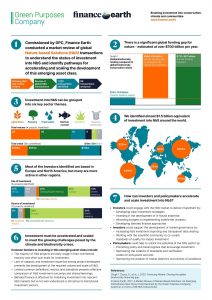|
|
 Employability Voices ASK SETH Support for jobseekers has been taken to a new level with the launch of the first online platform that connects them directly with local support to help them find work.
Called ASK SETH www.askseth.org, which stands for Skills, Employment, Training and Help, it is the only free, single source, digital platform for jobseekers which does not require sign up or membership.
Developed by wellness tech company Frog Systems, it was commissioned by the Employment Related Services Association (ERSA), the industry body representing employment support and training organisations across the UK, in response to the employability challenges thrown up by the coronavirus pandemic and the dramatic shift to consuming information online.
Minister for Employment Mims Davies MP welcomed the move: “Making it easier for jobseekers to find local employment support is vital as we support people to find work in our re-opened jobs market. This website, with help and advice, will do just this and help people move into roles.
“This dovetails with our own Plan for Jobs and is exactly the sort of support our Work Coaches are providing across our network of Jobcentres – levelling up opportunity across the country as we support workers of all ages to retrain, build new skills, and get back into work.”
With easy access to key facts, information, resources and contact details, the fast, free site incorporates three elements. An Employment Support Directory of specialist organisations and employability providers offering fully-funded support for jobseekers. Employability Voices provides a multitude of top tips from businesses and charities on retraining and finding work, with employability, skills and training experts providing bite-sized video content across a diverse range of subjects. While Employability Resources fine tunes job searching questions and gives specific help for those with additional needs.
Phil Worms, CEO of Frog Systems, said: “We have worked in partnership with ERSA to develop a platform that connects jobseekers with local employment support and helps frontline advisors, Jobcentre Plus work coaches and employers to understand who is working with jobseekers in their area. This positions ASK SETH as a new and valuable resource for people who are looking for work and those trying to help them.”
With video now making up more than 80% of online consumer traffic, it is a key feature of the platforms that Frog Systems creates. Short, easily consumable video clips from employment, skills and training experts are therefore at the heart of ASK SETH. Resources and support are also signposted for all types of jobseeker – older people who may never have been out of work before, homeless people, ex-offenders, those experiencing mental health issues, people with physical disabilities, migrant jobseekers, carers and those looking for their first job.
 Phil Worms, CEO, Frog Systems The anonymised data generated by jobseekers using the platform will give ERSA valuable insight into emerging employment and training trends and provide an additional source of data for Government departments such as the Department for Work and Pensions, the Department for Education and the Ministry of Justice.
Elizabeth Taylor, CEO of ERSA says: “The unique selling point of ASK SETH is that it is the UK’s only ‘go-to’ destination to access all you’d need to know for finding employment. Its functions are simple to manage for those less used to accessing this kind of information, and the videos enable jobseekers to gather the information and advice they need to make a successful step into employment. It is especially targeted to those who have little or no experience of unemployment with easy links and clear guidance on what many employability organisations offer. We are immensely proud of the format and see it as a game changer for unemployed people in these challenging times.”
The technology developed by Frog Systems is also used by organisations to provide mental health and wellbeing support.
With one in five people estimated to struggle with their mental health at some point, the company is helping leading organisations deliver powerful proactive messaging to support their communities. Already this year the company has launched platforms for leading organisations in the higher education, housing, construction and sports sectors.
Find out more by visiting www.frogsystems.co.uk Get in touch via email hello@frog.net or call 0300 124 6868.
Health and social care secretary Matt Hancock has been abruptly replaced by Sajid Javid. The Highland Marketing advisory board consider the huge agenda he is now facing, and what it could – and should – mean for health tech.
Matt Hancock’s downfall as health and social care secretary was swift. Last week, barely 12-hours after he had delivered the keynote speech to the NHS Confederation’s annual conference, The Sun newspaper published a CCTV grab of him enjoying a “steamy clinch” with an aide.
 Sajid Javid On Saturday, despite the palpable reluctance of prime minister Boris Johnson to sack him, he was forced to resign (BBC News) as the police started an investigation into whether he had broken the law when he breached his own measures to control the spread of Covid-19.
By the end of the day, Sajid Javid a former investment banker with Cabinet experience as culture, business, and home secretary and, briefly, chancellor, had been announced as Hancock’s successor (Sky News).
A huge agenda
Confed underlined the huge agenda that is facing health and care over the next five-years, and which is now sitting in Javid’s in-tray. Immediately, the NHS needs a new chief executive to replace Sir Simon Stevens, who is leaving after seven years.
It needs to see the detail of the legislation that will tear up the Lansley reforms of 2012, deliver significant new powers to the Department of Health and Social Care, merge NHS England and NHS Improvement, and create integrated care systems and integrated care providers.
At the frontline, it needs to get through the remainder of the Covid-19 vaccination programme, to navigate another wave of the disease plus flu this winter, to get stuck into a waiting list recovery programme, and to prepare for that shift to integrated care and population health-management.
Meanwhile, social care desperately needs the long-term fix promised by prime minister Boris Johnson as he took office. And both health and social care need to be able to offer something to an exhausted workforce upset at being offered a real-terms pay cut.
Imaging expert Rizwan Malik argued that “workforce planning has got to be central to Javid’s strategy for the NHS” because “we won’t be able to address the waiting list crisis or anything else if we don’t address chronic staff shortages.”
As part of that, he added, the new health and care secretary should stop the attacks on “foreign” staff triggered by would-be NHS England chief executive Dido Harding (The Times), and reign in criticism of general practice, which is struggling to find a balance between face to face and remote working post-pandemic.
Jeremy Nettle, the chair of Highland Marketing’s advisory board, pointed out on Monday morning: “Simon Stevens is leaving in 30 days; it’s going to be quite a handover.”
Start by heading off the looming leadership crisis
Andy Kinnear, a consultant with 30-years of experience in the NHS, felt Javid should start by addressing the imminent leadership crisis that will be caused by Sir Simon’s departure. “This is a leadership challenge,” he said.
“Simon Stevens has done a pretty stellar job in the face of some tough austerity measures, and over the past 18-months we have seen some great leadership from figures like Jonathan Van-Tam [the deputy chief medical officer] and Chris Whitty [his boss]. What they all have in common is a deep commitment to and understanding of the NHS, and we need more of the same.”
A number of political commentators have pointed out that Hancock’s departure could be bad news for Harding, the former Talk Talk executive and Test and Trace leader who has been publicly lobbying for his job – to the disgust of many managers (Health Service Journal) and medical professionals.
But if Javid is going to look beyond Harding and the limited list of other names in the frame, he will need time. Entrepreneur Ravi Kumar suggested Sir Simon might be asked to stay on, or an interim leader asked to step in for six months or a year.
Nicola Haywood-Alexander, group CIO at NHS Lincolnshire, added that transparency in the recruitment process was hugely important. “We need a leader with integrity, who understands what it is like to work at the frontline,” she said.
“People need to have trust in whoever is leading the NHS, and in the appointment process itself, because inevitably questions will be asked and candidates scrutinised. When I am with our health and care staff, you can see and hear who has their fellowship.”
Then stall the legislation?
If he wants to get on top of his in-tray, and then make his own mark on health and care, Javid may also need to stall the legislation required to implement the Integration and Innovation white paper. This will have to come forward soon, if ICSs are going to start work on a statutory basis next April.
But some political correspondents have been reporting that Number 10 is worried about the timing, the size of the changes proposed, and the plans to hand much more control over to ministers (The Independent). If the legislation is delayed, however, it will raise the question of what Javid wants to do with his new brief.
As a young minister, he had close links with think-tanks such as the Institute for Economic Affairs, which is associated with calls for a smaller social safety net, smaller state and more private involvement in healthcare, and in his brief stint as chancellor he continued his predecessors’ policies of austerity and public service cuts (The Independent).
Haywood-Alexander mused: “Javid has a good economic background. He’s got Cabinet and finance experience. But health is a tough gig, with huge demand, backlog, and costs, and the well-being of our staff and the ongoing lack of workforce across health and care need tackling.
“Also, where does he stand on privatisation? Or, more importantly, on priority of esteem between physical and mental health? Or social care? Or health inequalities? I’m not so worried about his capacity to do the job of a minister, but I do wonder what direction he will take, and how he will prioritise and tackle investment in these challenges.”
Refresh the digital agenda
Hancock tried to put his mark on health and care by focusing on technology and imaging expert Malik argued that his successor needed to do the same. “Don’t just do the typical political thing of reversing stuff your predecessor did, because you didn’t start it,” he advised.
However, many members of the health tech community would argue that Hancock didn’t always focus on the right things. Many hospitals still lack electronic patient records, ICSs have only just been told to get a ‘basic’ shared care record in place, and the NHS and Covid-19 apps have struggled.
In addition, NHSX, the agency that Hancock set-up with considerable fanfare, has failed to find a clear role alongside the policy making activity of the DHSC or NHS England or the delivery functions of NHS Digital, while many NHS digital leaders feel it has distorted local priorities by focusing on headline grabbing initiatives.
Cindy Fedell, an ex-NHS CIO now working in Ontario, argued it is doubtful that X will survive Hancock’s departure. James Norman, former NHS CIO and now healthcare CIO, EMEA, at Dell, agreed. “NHSX was already being consumed by the new transformation directorate at NHS England, and I think this is likely to signal its end in any form.”
Like Malik, Norman argued the challenge for Javid will be to “make sure he does not throw the baby out with the bathwater” but to “make sure the best of NHSX continues” because “the drive to accelerate change with technology was right, it was just the approach of setting up yet another arms length body to deliver it that was flawed.”
By “the best” of NHSX, Norman added that he meant its ability to focus attention on important areas such as interoperability, standards and the use of data. Kinnear agreed there is a “huge opportunity” in open architecture and open systems and in Hancock’s relatively new commitment to “separate data from the applications that use it” (digitalhealth.net).
This is one area in which Javid’s background might be reassuring. Banks invest large sums in IT and the arrival of open banking standards has driven innovation in fin tech. Nettle argued banks also understand “self-service”; or getting users to do some of the work of checking records, carrying out transactions, and booking services themselves.
“It’s not for everybody, and we know we have to keep digital inequalities in mind, but we need a digital front-door for the NHS, and as a banker Javid should understand that,” he said.
Time is ticking
Unfortunately, the NHS digital and data agenda isn’t in a great place with the public at the moment, as a result of Palantir’s involvement in the NHS Covid-19 Data Store (OpenDemocracy), NHS Digital’s decision to try and scrape the entire GP record without consultation, and the publication of a data strategy light on privacy safeguards or limitations on future use.
The advisory board argued that Javid would be advised to quietly extend the consultation period on the data strategy, and to put off the planned publication of the new NHS digital strategy, ‘what good looks like’ and ‘who pays for what’. Or, if he wanted to be really radical, to scrap them and give chief information officers the status and space “to get on and do our jobs,” as Fedell put it.
He may also need to explain or resign from his role as a well-paid adviser to C3.ai (Daily Mail), a Palantir competitor. Most of all, though, Javid needs to buy himself time and prioritise that huge agenda; or he’s likely to find himself consumed by it.
Kumar noted that he has already made one rushed decision by promising to lift all the remaining Covid-19 restrictions in England on 11 July. His pledge to make “freedom-day” “irreversible” will please the anti-lockdown tabloids (Daily Mail); but could come back to haunt the NHS in a bad winter.
Fedell suggested seasoned health and care pros would be on the lookout for other, eye-catching initiatives. “Hancock came in saying he’d run the NHS with an app. We’ll know pretty soon whether that’s Javid’s style. If he takes his time, we’ll know he’s in for the long-haul.”
Summary of key points:
Sitting on top of the NHS in-tray: Deal with the ‘exit wave’ of Covid-19; prepare for a challenging winter; start to address the elective care backlog; prepare for the implementation of the Integration and Innovation reforms.
Additional service priorities: deliver an equitable recovery; ensure parity of esteem between physical and mental health; tackle the deep-seated health inequalities exposed by the pandemic.
Must-dos for the new health and social care secretary: Ensure a transparent process to replace Sir Simon Stevens as chief executive at NHS England; reboot the legislation required to implement Innovation and Integration; bring forward a social care green paper that delivers on prime minister Boris Johnson’s promise to “fix social care once and for all”; head off an NHS pay row and address long-term workforce challenges; go in to bat for his new department in this autumn’s comprehensive spending review.
Some friendly advice, in the form of six health tech dos and don’ts:
Do maintain investment in healthcare technology and don’t “do the political thing of reversing the stuff your predecessor did, just because you didn’t start it” (Rizwan Malik).
Do consider whether it is worth retaining NHSX within NHS England’s transformation directorate but don’t junk the best of what it has achieved – the renewed focus on interoperability, standards, and the use of data (James Norman).
Do push ahead with the NHS data strategy commitment to “separate data from the applications that use it” (Andy Kinnear) but don’t get distracted by every “shiny new app” that wants to use the data (Cindy Fedell).
Don’t forget there is unfinished business in infrastructure, cyber security, single sign-on, shared care records, and modernising GP systems, and do push for investment in social care and addressing the digital divide (Nicola Haywood-Alexander).
Do make sure that procurements are transparent (Ravi Kumar) and don’t forget that public trust is vital – or that it’s just been badly dented by the General Practice Data for Research and Planning extract proposals.
Do think back to your days as a banker; and bring some of banking’s culture of investing in IT, open systems, self-service and innovation to the NHS (Jeremy Nettle).
 Highland Marketing’s advisory board is: Jeremy Nettle, former global advisor for Health Sciences, Oracle Corporation; Cindy Fedell, former chief digital and information officer at Bradford Teaching Hospitals NHS Foundation Trust; Andy Kinnear, former director of digital transformation at NHS South, Central and West Commissioning Support Unit; James Norman, healthcare CIO, EMEA, at Dell Technologies; Ravi Kumar, health tech entrepreneur and chair of ZANEC, and Rizwan Malik, divisional medical director of Bolton NHS Foundation Trust and managing director of South Manchester Radiology. Highland Marketing’s advisory board is: Jeremy Nettle, former global advisor for Health Sciences, Oracle Corporation; Cindy Fedell, former chief digital and information officer at Bradford Teaching Hospitals NHS Foundation Trust; Andy Kinnear, former director of digital transformation at NHS South, Central and West Commissioning Support Unit; James Norman, healthcare CIO, EMEA, at Dell Technologies; Ravi Kumar, health tech entrepreneur and chair of ZANEC, and Rizwan Malik, divisional medical director of Bolton NHS Foundation Trust and managing director of South Manchester Radiology.
By Charles Knight, Managing Director of Public Services at Totalmobile
More than a year since the UK’s first national lockdown and there is finally a light at the end of the tunnel, with a somewhat clearer roadmap out of lockdown. Understandably, throughout this collective experience, a lot of attention has been focused on the workers who were used to being in the hustle and bustle of an office environment, suddenly now working from home, a little isolated, and more often than not, juggling home schooling as well as navigating their new working landscape.
However, at the same time, not every worker has been able to shift gears and work from home. As well as the many professionals who have not been able to work at all, there are tens of thousands of mobile workers whose roles require them to travel between locations every day, and the impact of the pandemic on their workplace is still developing.
 Businesses across the world are making permanent changes to the way they conduct business post-pandemic and, according to recent media speculation, the public sector is no different. A recent article by The Times suggests that the government is already proposing the possibility of making work from home “a permanent feature of British life after coronavirus, with plans to strengthen employees’ rights to work from home or ask for different hours”. Potentially affecting over five million public sector employees, everyone will be watching what happens next with interest. Businesses across the world are making permanent changes to the way they conduct business post-pandemic and, according to recent media speculation, the public sector is no different. A recent article by The Times suggests that the government is already proposing the possibility of making work from home “a permanent feature of British life after coronavirus, with plans to strengthen employees’ rights to work from home or ask for different hours”. Potentially affecting over five million public sector employees, everyone will be watching what happens next with interest.
But, as workplace change continues to sweep across the economy, what about industries that support local authorities, like facilities and property management or utilities, where mobile workforces make up a significant portion of staff? How has their way of working evolved? Even during the worst of the pandemic these organisations couldn’t simply tell employees to work from home. They needed to find solutions that kept both staff and customers safe at the same time as finding cost effective ways to complete jobs in an efficient and productive manner, while remaining compliant with regulation and SLAs.
In a bid to remain agile and efficient whilst safeguarding the wellbeing of their employees, public sector organisations with mobile workforces have, as a result, been increasing their reliance on technology; not only through hard and unprecedented times, but in better times too. Post-pandemic, we can expect these working practices to evolve across a number of key areas.
A juggling act with high stakes
There is pressure on organisations everywhere – reduced budgets, leaner teams and all with the expectation of becoming more efficient. As a result, there has been considerable emphasis on streamlining areas such as reporting and analytics. One example of this is operations managers looking after vehicles spread within local authority regions or further afield need to be able to send workers to specific locations at precise times. As a manual task, managing dozens or even hundreds of remote workers is not only inefficient, but prone to errors and often more expensive.
Live scheduling technologies are increasingly one of the most popular solutions that organisations are turning to in order to address this challenge. One of the most valuable elements of today’s scheduling technologies is the ability to reallocate jobs in real time. If, for instance, it’s more efficient for one employee to visit a certain site over another, tasks can be updated as more information becomes available. As a result, operations managers can use automated updates to improve efficiencies, more accurately track vehicle movement and enable staff to make better decisions. This helps organisations to save time and allow field staff to be more productive.
Employee wellbeing has been a common topic in the media throughout the various lockdowns we’ve experienced over the last year. For public sector employers, duty of care to protect the safety of all staff and citizens alike is, and has always been, a key area for continued attention. For mobile workers, communication and the ability to monitor the location and wellbeing of employees is a ‘must have’ if staff are to be fully protected while carrying out their roles.
In practical terms, lone worker solutions, video diagnostic technologies and staff wellbeing trackers provide employers with real-time visibility of the current status of staff, while access to historical information can be evidenced at a later date should the need arise. Not only does this help organisations become more responsible employers, it also improves the safety and wellbeing of staff, while helping workers focus on their compliance obligations.
Lockdown has meant many people have become used to changing the way they access public services, and with today’s technology making it possible to balance efficiency with workplace wellbeing, while also focusing on delivering better services, both local and national public sector organisations must continue to innovate over the long term. Even with the pandemic creating its own unprecedented challenges and the current pressure on resources, local authorities are still expected to transform their customer experience. Members of the public will continue to expect the same level of high-quality service and flexibility when interacting with public sector bodies even when the public health crisis is no longer restricting how services can be delivered.
Notwithstanding the array of unprecedented challenges public sector bodies have faced this past year, they and their teams’ ability to navigate, adapt, and focus has been nothing short of spectacular. In a time of crisis, the ability of those organisations that are able to digitally transform to remain focused on the efficiency, effectiveness, and wellbeing of their mobile workforce, are the ones succeeding, and they will be well positioned to continue to see benefits in the years to come.
 By Sascha Giese, Head Geek™ at SolarWinds By Sascha Giese, Head Geek™ at SolarWinds
Public sector organisations across the country are looking closely at the way they can improve services and performance by optimising their use of data. Indeed, many are focusing on it as a key asset and a driving force behind their wider technology strategy to build a ‘data-centric’ approach.
What The Research Tells Us
Database professionals play a vital role in this process, and their role as data custodians—often for private and sensitive information—is pivotal if organisations are to maximise the value of data and turn more of it into useful insight. For instance, research has shown 41% of database professionals consider half or more of their databases to be a critical success factor for their organisation—an important perspective that illustrates the reliance organisations place on data.
Data is also on the move, and workloads are expected to shift rapidly to the cloud, with Cloud Database-as-a-Service (DBaaS) viewed as one of the top three highest priority database platforms to adopt in the next three years. What’s more, nearly two-fifths (38%) of tech pros anticipate bigger budget allocations in 2021 (compared to 2020) to help manage the increased complexity surrounding databases.
This complexity is also characterised by the sheer volume of data collected and held across every organisation, and while much of this is vital, the databases used across the public sector are also populated by information which is redundant, outdated and trivial (ROT). Yet, collecting and keeping the right data is crucial if organisations are to maximise efficiency and use the valuable information they hold to make informed decisions.
The Path to ‘Data Centricity’
So, how can those responsible for building, running, and maintaining databases balance these opportunities and challenges to focus on becoming data centric? A key question to answer is what each dataset is going to be used for. There are a huge variety of requirements, from preparing a slide deck or a dashboard in their monitoring environment to collecting metrics to show the dev manager how often their team is logging in to the system to perform key tasks. But by understanding these needs, database professionals can collect data in the way that makes the most sense.
In addition, the information derived from data should help uncover facts, not confirm biases. For example, if the objective is to determine if server reboots are being caused by patches being applied too often, instead of asking “How often are patches applied?” focus on “How many patches need a reboot?” By comparing this number to the total number of server reboots, it becomes much easier to conclude how often these reboots are affected by patching. The data gained over a longer time frame can also verify the reliability of the vendor information on whether rebooting is required.
With data being easy to come by, it can be difficult to focus on collecting only the worthwhile details. But by becoming more data centric and more data driven themselves, IT teams can reduce the amount of ROT in their environment and prevent data hoarding. In turn, they can help create more efficient, technology-led processes that can help public sector organisations deliver more effective services and maximise value for money.
 The ash is one of the most common trees in the UK and is a much loved part of the landscape. Now, though, it is under serious and sustained threat from ash dieback. The ash is one of the most common trees in the UK and is a much loved part of the landscape. Now, though, it is under serious and sustained threat from ash dieback.
Which means, over the coming years, another common sight will be an ash tree accompanied by a bright red mobile elevating working platform (MEWP), the Hinowa spider platform.
The Hinowa ‘spider’ is the access platform of choice for most tree surgeons. Distributed in the UK by Access Platform Sales, they are increasingly vital tools for responding to ash dieback by inspecting, reducing or felling trees that have succumbed to the disease.
Over time, ash dieback leaves trees brittle and unstable which means rope climbing – the traditional method used by trees surgeons to get up close and personal with trees – becomes too dangerous.
Ash dieback, also known as chalara, is by far the biggest challenge to the UK’s treescape over the next two decades. The Woodland Trust estimates it will wipe out over 80% of the UK’s 126m ash trees.
That means the crisis will also be a key driver in a trend away rope climbing towards the safer and, in many cases, more productive method of working from platforms.
Working on trees – the rise of the spider
The seed that has seen the rise of the spider platform in the tree management industry was sown with the publication, 16 years ago, of the Working at Height Regulations 2005.
They enshrined in law a duty to carry out an assessment of the risks associated with working at height and to always select the safest practical options available.
That placed the benefits of working from a platform to the fore. Since then, there has been a steady move towards the adoption by tree surgeons of MEWPs, and spider platforms in particular.
In fact, from the word go, Hinowa has designed its spider platforms with the needs of the tree management industry front and centre.
The platforms have tracks for moving across rough and low loadbearing ground. In transport (tracking) mode they are ultra-narrow to move through confined spaces. Their outriggers are then deployed to create a firm and safe working platform. Key, also, is the platform’s exceptional outreach.
Arborist James Plaskett, owner of Access 2 Trees in Shropshire, shares the views of many tree surgeons, saying: “Hinowa spider platforms are perfect for tree work, and have replaced rope climbing in most cases.”
The Arboricultural Association has supported the move to working from MEWPs. Its code of practice has a risk hierarchy that places working from platforms firmly above rope work as the most desirable option.
However, Simon Richmond, the association’s technical officer, admits the industry has some way to go to fully adopt working from MEWPs.
He says: “I would say we’re not very much over halfway. A lot of tree surgeons want to stick to rope work because it’s what they know. But when forward-thinking ones invest in platforms, they invariably see the benefits and don’t want to go back.”
Those benefits include winning new business from agencies, like the National Trust and English Heritage, which have firm policies that require working from platforms in all but exceptional circumstances.
 Working from Hinowa spider platforms can also sharply increase productivity. They also improve quality. This aids long-term tree health, as crowns can be trimmed more precisely from a platform. Working from Hinowa spider platforms can also sharply increase productivity. They also improve quality. This aids long-term tree health, as crowns can be trimmed more precisely from a platform.
Tightening control – two-rope working
Tree surgeons are also likely to look to platforms more thanks to the Health and Safety Executive’s (HSE) insistence on the introduction of two-rope working.
When the 2005 regulations came in, tree surgeons were allowed to keep single rope anchor points, the industry standard at the time. From 2020, the HSE has required two. It had lost patience, it explained, with regular serious injuries and deaths from falls.
It is a sign, say industry experts, that the days of widespread rope climbing for tree management are numbered. It will increasingly become a niche practice, used in exceptional circumstances.
Spider platforms and ash dieback
Ash dieback will have an increasingly important influence on the take-up of access platforms for tree work. The effect of the disease on trees is still the subject of scientific study.
However, it is acknowledged that as ash dieback takes hold, it makes branches increasingly brittle. As a result, many tree surgeons have decided climbing trees that have the disease is off limits.
Either they must be reduced from MEWPs, like Hinowa spiders, or remotely, using equipment like tree sheers or grapple saws. Given the wider use of spider platforms, they are the most common alternative.
In March 2020, Thompson Tree Services used its Hinowa Lightlift 20.10 to remove trees infected with ash dieback along a main road near Matlock in Derbyshire.
Managing Director Jack Thompson said: “The trees were a danger to road users and pedestrians. Working from our Hinowa was the only sensible way to work on them. They were just too dangerous to climb.”
In some cases, it is not ash dieback that represents the primary threat, but secondary infections as the tree weakens, for example Armillaria, a fungus that rots tree roots. These trees will be particularly dangerous to climb. In some cases, they collapse even as they are being felled.
Access platforms also have a role to play in surveying woodland and monitoring the spread of the disease as part of a sustainable approach to countering its impact [See separate box].
Ash dieback is a tragedy in terms of the impact on the British landscape. Ironically, though, it is accelerating the trend towards using MEWPs, most commonly spider platforms, to work on trees, so is spreading safer practice as well.
Simon Richmond says: “Using MEWPs denotes a higher level of professionalism. It’s why more clients are stipulating they should be used when working at height. The development of ash dieback will only reinforce that trend.”
Ash dieback fact file
Scientific name Hymenoscyphus fraxineus
Pathogen Fungus
Origin Asia
First identified in UK 2012
Number of ash trees in Britain 126 million
Proportion of all broadleaf trees 11%
Most common South West (12.6%) and East Midlands (12.7%)
Proportion expected to die 80%
Estimated economic cost £15 billion
 APS spider platform guide Don’t add a ‘crime’ to a disaster
If you find trees infected with ash dieback on your land, don’t fell them straight away, urges Arboricultural Association Technical Officer Simon Richmond.
“Property owners who find ash dieback often fell the infected trees and others in the same stand. In my view, this adds a crime to a natural disaster, because it appears around 15% of trees are either resistant to the disease or can recover from it,” he says.
Instead, property owner should monitor the development of the disease, using a four-stage model advocated by the association, and only fell those that it is clear will succumb.
He explains: “Younger trees are more susceptible to ash dieback. That means, if we can save the older, more resistant ones we have a stock from which we can start to rebuild our ash populations.”
Hinowa spider platform – quick guide
- Working height – 13m to 33m
- Articulating boom – For reaching over obstacles
- Compact body – To get through narrow gaps
- Outriggers – Self-levelling for speed and safety
- Rotating basket – For precise positioning
- Tracks – To travel over rough terrain
- Power pack – All-electric, diesel, petrol, or bi-energy
- Safety features – Include tilt alarms and auto return to ground
About the author: Steve Couling is Managing Director of Access Platform Sales, the UK and Ireland distributor of Hinowa spider platforms.
 CICV Forum – Ivan McKee The Construction Industry Coronavirus (CICV) Forum has pledged its ongoing commitment to the Scottish Construction Leadership Forum (CLF) and has warmly welcomed its new Chair, Scottish Government Minister Ivan McKee.
The unique collaboration of trade associations, professional bodies, companies and individuals is now a key contributor to the CLF, having realigned its infrastructure to be consistent with the mission of its fellow sector body.
At its full meeting yesterday (June 17), the CICV Forum said that it is looking forward to working closely with Mr McKee, the new Minister for Business, Trade, Tourism and Enterprise, who takes over the Chair from Kevin Stewart, who is now Minister for Mental Wellbeing and Social Care.
Alan Wilson, CICV Forum Chair and Managing Director of SELECT, said: “We are keen to continue the constructive and positive dialogue which we have enjoyed so far with the CLF, and to build on the strong foundations we have established.”
As an illustration of the CICV Forum’s commitment to continuing dialogue, it welcomed to its meeting a Scottish Government official, who updated Forum members on a meeting of the CLF held the previous day.
Mr Wilson added: “The CICV Forum is very pleased to be so closely linked with the CLF as it carries out its important work and we are sure that we will enjoy the same productive relationship with Mr McKee as we did with his predecessor.
“We are delighted that the CLF continues to be chaired at Ministerial level and we will continue to provide practical suggestions and solutions in a spirit of collaboration and co-operation.”
The CLF was formed in 2019 by Construction Scotland and the Scottish Government to focus on the sector as a key economic driver and has been instrumental in detailing the industry’s longer-term recovery plan.
Along with the CICV Forum, it is now firmly committed to the ideals of co-operation and collaboration within the industry and to demonstrating the sector’s determination that it can flourish by working together.
Business Minister Ivan McKee said: “Through collaboration, the CICV Forum provides valuable contributions to the work of the CLF. It has quickly become a major influence on the construction industry’s direction of travel, offering practical guidance and support at a time when it was most needed.
“I hope that support will continue as we work together on delivery of the CLF’s long-term Recovery Plan which is showing steady progress and on the transformation which is vital for the sector.
“I look forward to working with the CICV Forum and our other partners to build the sustainable, innovative, diverse and successful industry we all want to see.”
Since its inception at the start of the pandemic in the spring of 2020, the CICV Forum has evolved from being a successful and innovative crisis response organisation into a major voice within the Scottish construction sector.
Made up of more than 70 trade associations, professional services bodies and companies, it has maintained a steady supply of information and practical advice to the sector as well as carrying out surveys, hosting webinars and holding regular discussions with the Scottish Government.
The Forum’s most recent event was a political hustings in April, during which Scottish Parliamentary candidates from the five main political parties debated the major issues facing today’s construction industry.
Software consultancy Scott Logic has been awarded a new contract to act as implementation and development partner on the Scottish Government‘s digital identity programme.
The digital identity programme is part of the Scottish Government’s Digital Strategy actions to build a suite of common platforms to be adopted across the public sector, transforming government. The commitment is to introduce a digital identity service for users: to develop and establish a trusted and secure service for users to prove who they are, and that they are eligible for a service.
 Business Minister, Ivan McKee Users will be able to store their information and choose to share it when applying to public services. This will improve a user’s access to services by providing a safe, secure and accessible way to prove their identity, while reducing time and cost for the public sector.
Business Minister Ivan McKee said:
“People expect public services that are accessible and simple to use. They want them to be inclusive and designed around their needs, rather than the structures of the organisations that provide them.”
“Our vision is to introduce a digital identity service for users, that provides a safe and easy way for people to prove that they are eligible for a public service or benefit online.”
The programme encompasses four main components: secure sign-in for end users, an attribute store, integration with credential providers and integration with service customers, the public sector organisations that depend on verification. Scott Logic is the principal implementation and development partner, bringing its engineering expertise, as well as configuring, testing, API development and full service management.
Scott Logic began work on the initial two-year project in April 2021, and there is an option for two one-year extensions should they be required.
 Stuart Grey, Head of Consultancy – Edinburgh office “This is a user-driven platform that will improve access to public services in Scotland by providing citizens with a safe and secure way to prove their identity. It will also reduce time and cost for the public sector when delivering digital services,” said Stuart Grey, Head of Consultancy Edinburgh office, Scott Logic. “It’s an essential component of Scottish Government’s platform strategy, giving users complete control over how their personal information is used, stored and shared to prove eligibility for a public service or benefit online. We have a strong heritage working with the public sector and to be entrusted with such an important strategic project is testament to our credentials and expertise in this field.”
Scott Logic employs more than 300 people, providing a wide range of technology services, including architecture and technical strategy, bespoke software development, and data engineering. In January 2021 it announced the appointment of former executive director of Government Digital Services (GDS), Stephen Foreshew-Cain, as the new company CEO.
The digital identity programme is the second major piece of work for Scott Logic with the Scottish Government. After partnering during the prototype and alpha phases, Scott Logic began work in October 2020 on a new payment platform that will allow Scottish public sector departments to manage payments consistently.
With tens of millions of transactions set to take place in coming years, this two-year project aims to drive consistency of user experience and standardise the outbound payment process across Scottish Government. Scott Logic is the implementation and development partner, building the platform, application and integration services.
Implementation to digitalise and automate scheduling of over 36,000 home care visits a week will save time and money whilst improving communication with social care stakeholders
Totalmobile, the UK leader in Field Service Management software solutions, has announced it is working with South Lanarkshire Council to modernise the service that plans, schedules and carries out personal care to around 1,500 service users a week.
The council’s Care at Home Service operates seven days a week to help people remain as independent as they possibly can in their own home. The modernised service is being rolled out in four localities, starting with Hamilton in May 2021, over the next six months. Rutherlen & Cambuslang, Clydesdale, and East Kilbride localities will follow in that order before the end of the calendar year.
Historically, the service planned visits and resources manually, relying on a team’s local knowledge. It was a time intensive process, and any optimisation or changes required to a schedule were made manually. This proved troublesome due to the need to then communicate to a mobile workforce of almost 1,000 Home Carers.
A pilot was run initially in the Hamilton locality where Totalmobile’s Optimise, Mobilise and CareLink solutions were implemented. Jobs were scheduled via Totalmobile’s field service management technology that optimises resource and journey planning. It connects workers out in the field with the office via handheld mobile devices, and links to other stakeholders like GPs and the NHS service.
Scott McNeill, Service Manager for registered Care at Home Services at South Lanarkshire commented: “Modernising our Care at Home Service with Totalmobile enables us to direct more of our staff time towards supporting and makes us more efficient. We’d known for some time that our existing system had limited efficiency, it took one of our community support coordinators a day a week just scheduling jobs, and then inevitably changes had to be made. It was time intensive and reactive.
“The initial roll out in Hamilton for 30 carers working on 1,000 visits per week began in March and it couldn’t have run more smoothly. In fact, we went straight from pilot to live implementation with the support of Totalmobile training the workforce on its easy-to-use interface. The support we have received from Totalmobile has been tremendous, as has been the positive feedback we’ve received from our workforce. We are now more efficient than we’ve ever been.”
The dynamic nature of the new service now means that jobs can be rescheduled at short notice and avoids wasting resources through staff attending last minute cancellations. It also optimises journey planning so that no more time ‘on the road’ is spent than is necessary.
Schools are predominantly set up to teach children born in different years. With twins and multiples, it can become a challenge to ensure their needs are considered and that they are included. This extends to how teachers and schools communicate with them and their parents, whether or not the siblings are taught in the same class.
Leonie Huie, a part-time teacher and a mum to three-year-old twin girls from Southwark, is the author of The First Year Is Survival, a book published in October 2020 for parents of twins and multiples – writes London News Online on 13th January 2021. She was also awarded the British Empire Medal in the 2021 New Year’s Honours for her service’s to education. Read the story here
With many schools, teaching unions and teachers expressing concerns about how safe the classroom is – despite reassurance from the Royal College of Paediatrics and Child Health (RCPCH), an article by Yvonne Williams in the Times Educational Supplement (TES), asks how many teachers have decided to quit their profession.
Yvonne Williams is head of English and drama in a secondary school in the South of England. In her December 2020 article, written before the recent spate of school closures, she argued that the risks of infection, as well as the stresses, strains, and fear over novel coronavirus Sars-CoV-2 and Covid-19, were made it more likely for people to quit their teaching jobs during the crisis: Read the full story
Thousands of roles available in the ‘hidden’ employability industry as the sector prepares for the busiest time in its history
Employability Day on 30 April 2021, was the UK’s largest celebration for organisations supporting often disadvantaged people to gain, sustain and progress in work. Led by the Employment Related Services Association (ERSA), it’s an annual opportunity for the employability sector to celebrate all that it accomplishes and wants to achieve for jobseekers in the UK. In these unprecedented times, as the sector’s work proves to become more crucial than ever, ERSA is leading the call for people of all professional and personal backgrounds to consider a career in employability.
 ERSA CEO, Elizabeth Taylor With recent Government contract announcements of the new Restart employability programme, the sector is at its busiest in terms of levels of financial support and expansion. Over a course of three years, the Restart funding package of £2.9b will help over 1 million unemployed people find work in England and Wales as the employability sector manages and proactively changes the challenge of unemployment during and following Covid-19.
With all hands on deck for the next few years, the industry itself must upscale at pace and fill a diverse range of positions, across all levels of skills and expertise. In a nutshell, the sector itself, who are themselves employers, is short staffed and requires jobs to be filled as a matter of urgency.
Elizabeth Taylor, CEO of ERSA, the membership body for the employment support sector, says:
“Our sector has a breadth of roles to be filled, from frontline advisers, trainers, and youth workers to wellbeing professionals, admin and IT staff. The sector offers fulfilling roles, professional career development and accreditations. All wrapped up in a buoyant, growing and innovative industry, working with like-minded people to help those that need it most.
“Employability is a hidden industry – an area you might know little about unless you’ve had first-hand experience of unemployment – but it’s a sector that embraces the skills and lived-experiences that workers can bring from other areas.”
Jayne Garner, now Head of Delivery for major employability provider Ingeus, is a case in point. 20 years ago, Jayne worked in the heady, high flying world of recruitment, but became disillusioned, knowing her skills could be put to better use. She became a frontline advisor, working with long term unemployed people, and hasn’t looked back. She is now an award winning driving force in enhancing the long term life chances of people to find and sustain employment, managing a team of 120 colleagues to do just the same.
Jayne adds: “I didn’t appreciate the opportunities that were open to me within the employability sector, but when I did, I made the decision to take the plunge and not regret something I hadn’t done. It was the best decision I ever made, and today I embrace the challenges that each day brings me. At the end of every day, I know my efforts have made that difference and that my day-to-day is worthwhile.”
Interested in the opportunities the employability industry offers? The ERSA website lists ERSA members’ vacancies for the new DWP Restart Programme: ersa.org.uk/restartjobs
or search online for employability jobs:
findajob.dwp.gov.uk/search?q=employability+&w=
jobs.theguardian.com/landingpage/2868250/jobs-employability-html/
uk.indeed.com/Employability-jobs
www.totaljobs.com/jobs/employability
www.red5people.co.uk/job-category/employment-support/
www.thelevycompany.co.uk/employability
www.alderwoodrecruitment.com/employability-welfare-work-jobs
www.myiep.uk/page/IEPTalentAcademy
Employers with live vacancies (including employability organisations themselves) are invited to contact the prime provider partnership for free recruitment and employability services: www.dwppartners.co.uk/get-in-touch/
 Whizz Education, provider of the leading virtual tutor Maths-Whizz, has quantified the lockdown learning loss in maths experienced by 5–13-year-olds in the UK. Whizz Education’s research shows that 46% of the 1,721 children assessed experienced a learning loss, exhibiting an average of knowledge decline of eight months during the first lockdown. Whizz Education, provider of the leading virtual tutor Maths-Whizz, has quantified the lockdown learning loss in maths experienced by 5–13-year-olds in the UK. Whizz Education’s research shows that 46% of the 1,721 children assessed experienced a learning loss, exhibiting an average of knowledge decline of eight months during the first lockdown.
Dr Junaid Mubeen, Director of Education explains: “Learning loss is such a loaded term. At Whizz we simply take it to mean a decline in students’ knowledge levels, which is hardly surprising in the face of severe disruptions this past year. Despite the tireless efforts of teachers to adapt lessons and provide remote classes, the global pandemic has had a drastic effect on pupils’ learning.
“We found that pencil and paper multiplication was the skill that fared worst, along with pencil and paper addition, both demonstrating more than six months of knowledge declines across the sample.
“Knowledge declines were less severe in topics such as integers, powers and roots and also decimals (5 months’ learning loss). Children studying these topics are generally older, however, so these findings reflect similar studies we have conducted in other regions around the world, where younger pupils with a limited store of knowledge to draw on, suffered a higher degree of learning loss.
“It is also likely that those in our underserved communities have been hardest hit – a sad consequence of the pandemic is that it has exacerbated the attainment gap, with disadvantaged students falling further behind due to lack of access to online learning during school closures. We’ve observed this in both the UK and globally.
“While we recognise that some students have lost almost a year’s worth of maths knowledge, when addressing how best to move forwards it is important that teachers are not put under further pressure, or that students are made to feel penalised, for events which have, frankly, been out of their control. We should not expect quick fixes; it will take months, even years, for students to regain any lost ground. The emphasis needs to be on informal assessment of gaps and ensuring each student receives individualised support that addresses their specific knowledge gaps. Virtual tutors can play an important part in the battle against learning loss, without inducing further burdens on teachers.
“At Whizz Education, we believe that every child deserves a learning experience that caters to their individual needs and pace of learning. We work closely in partnership with schools to develop quality bespoke learning programmes delivered via our virtual tutoring platform, Maths-Whizz. Maths-Whizz uses powerful AI to build a completely personalised plan for each child, and then continues to tailor it as they complete lessons.
“Maths-Whizz provides more than 1,250 pre-prepared lesson plans, assisting teachers to deliver measurable learning gains for children with a range of abilities. Our research shows with just 60 minutes per week of Maths-Whizz over a six-week summer period, students can expect to acquire a 4-month learning advantage. This year of all years, this seems like too great an opportunity to pass up.”
To find out more about Whizz Education and the Maths-Whizz virtual tutor please see: www.whizzeducation.com
 By Sascha Giese, Head Geek™ at SolarWinds By Sascha Giese, Head Geek™ at SolarWinds
Recent research in the U.K. public sector shows a combination of cloud and local infrastructure will continue to be used over the course of this year, with up to 53% of services confirming they use hybrid infrastructure. In essence, hybrid IT is the integration of on-premises IT services and cloud-based services, and it includes any blend of software as a service (SaaS), infrastructure as a service (IaaS), or platform as a service (PaaS) solutions with traditional IT infrastructure. More and more organisations are realising the value, practicality, and potential hybrid IT offers to grow proficiencies, services, and solutions.
Practically speaking, public sector organisations throughout the country are leveraging hybrid IT to deliver the performance, flexibility, and scalable infrastructure foundation needed to meet short- and long-term IT needs. Indeed, in response to the government’s pursuit of a “cloud-first” approach, over half of U.K. public services use hybrid infrastructure, with organisations gradually moving their infrastructure and services from on-premises venues to the cloud.
Though the flexibility of hybrid IT is one of the main reasons behind its growth, bringing dissimilar systems together can also significantly increase complexity. For instance, many IT teams will be familiar with the challenges of troubleshooting a service outage and spending more time working out the source of the outage than taking the steps required to resolve the issue.
This is just one example of a range of challenges involved in implementing and managing hybrid IT. So how can public sector organisations make the most of their hybrid IT investments to deliver service innovation and digital transformation alongside reliability, performance, and security?
Overcoming Hurdles
Among the most common challenges teams face in the development and integration of on-premises and cloud technologies is ensuring internal and external IT stakeholders can embrace new solutions and services. Education and training play a key role in maximising efficiency, but they can sometimes be sidelined compared to other priorities, resulting in users not knowing how to properly use new technologies.
To augment hybrid strategies, for example, many experts support splitting the IT organisation into two segments: one focusing on on-premises technology and another targeting cloud technologies. Though IT teams generally have the technical skill to execute on these goals, wider organisational functions—such as finance, HR, and compliance—may benefit from education about how on-premises and cloud services work together.
However, monitoring remains one of the key issues to address in successfully delivering efficient hybrid IT infrastructure. Configuring networks, moving data, and executing services in a hybrid infrastructure is relatively straightforward, but service monitoring continues to be one of the most critical responsibilities of an infrastructure team. Some parts of the hybrid cloud, for instance, are similar to traditional enterprise resources. However, the public cloud doesn’t provide insight into the physical infrastructure—in a private data centre, monitoring agents and integration offer detailed information about everything from the hardware to the hypervisor, guest, and application.
Making Monitoring Work
A smart approach to monitoring processes and technologies facilitates a reduced mean time to resolution (MTTR) for any services impacted by infrastructure failure. Every layer of abstraction reduces the ability to correlate physical hardware failure with service availability, and adding data centre clustering solutions (such as Docker and Kubernetes) results in additional layers of abstraction and increases the importance of effective monitoring.
Implementing monitoring tools supports an improved understanding of the underlying infrastructure. As an example, architects can mine monitoring data for capacity planning, using the insight to prioritise future investment plans. Additionally, monitoring tools provide the capability to design the placement of workloads based on organisational growth and a data-driven understanding of the hybrid infrastructure.
The reality for public sector organisations is hybrid IT is increasing in popularity every day, meaning there’s a choice they need to make. Teams either need to regard it as a foundation for their entire infrastructure or see it in the bigger picture as a springboard to further cloud adoption over time. Both options are a step in the right direction on the digital transformation journey, and whichever one they choose, incorporating detailed and focused monitoring capabilities into their approach can help organisations maximise system performance, reduce downtime, and plan for future requirements.
International cricket is returning to the Bristol County Ground this summer and Gloucestershire Cricket is taking the opportunity to thank the heroes of the COVID-19 pandemic by giving away tickets to blue light workers.
In a rerun of the 2017 ICC Women’s Cricket World Cup Final, England will take on India in Bristol on Sunday 27 June, which has been renamed ‘Thank You Day’, giving Gloucestershire Cricket the chance to acknowledge the commitment of the many thousands of local NHS and emergency service staff who have been working tirelessly over the past year.
England captain Heather Knight is looking forward to leading out her World Cup winning team at the County Ground and acknowledging the Bristolians who’ve gone above and beyond over the past twelve months. “So many people have been putting themselves at risk to look after others during the pandemic, it will be an honour to entertain some of them,” she says. “My brother and his partner both work for the NHS – as do many of my friends – and I’m hugely proud of them and all the medical staff who’ve been keeping hospitals going.” Heather herself signed up to become a medical transport volunteer in March 2020 during the first national lockdown.
Heather’s teammate, England and Western Storm bowler Anya Shrubsole, who took six wickets in the ICC Cricket World Cup Final to secure victory for England, is also expected to be in action on 27 June. She’s delighted to be returning to the County Ground and being part of the thank you effort. “I always love playing in Bristol, which is close to home for me. Thank You Day is such a great initiative, it will be a real honour to play in front of the real-life heroes in the crowd,” she said.
The County Ground has played its own part in helping combat coronavirus by hosting both flu and COVID vaccination clinics during the winter and into the current cricket season. Working In conjunction with the local GP centre, almost 7,000 vaccines have been administered at the ground to help protect local people and enable the country to return to normality as quickly as possible.
“I’m delighted that the club has been able to play a small part in the fight against COVID but the real heroes have been the blue light workers who have provided care and hope to so many,” says Will Brown, Gloucestershire Cricket CEO. “Thank You Day is our way of acknowledging their selfless efforts – we hope they have a great day out on us.”
”We are very grateful for the support of Blue Light Tickets, who have made the application process as straightforward as possible, and our thanks go also to Ticketmaster, who are waiving their usual administration fee to make the day completely free for our NHS heroes.”
William Campbell-Lammerton, Partnerships and Operations Manager at Blue Light Tickets, said:
“The work done by the blue light community during the pandemic has been nothing short of remarkable. Thank You Day is a fantastic cause for the South West and the UK, and it’s inspiring to see Gloucestershire Cricket’s generosity.
“I’m delighted that Blue Light Tickets has been able to support Bristol Cricket Ground in providing complimentary tickets to those that have given so much to us. The UK has an impressive cricket presence, and I can’t wait to see emergency service workers flock to Bristol’s historic ground for a fun-filled day out. The team spirit you experience at an in-person sports game is second to none, and as we emerge out of lockdown, what better way to start the summer than by watching a World-Cup winning team for free?”
To receive a pair of free tickets to the Royal London One-Day International, eligible NHS and emergency service workers can visit www.bluelighttickets.co.uk to register and obtain a unique reference number before booking through the Gloucestershire Cricket website: www.gloscricket.co.uk/tickets
 The Green Purposes Company, in partnership with Finance Earth, has today published a ground-breaking report on the urgent need to accelerate and scale up investment in nature. This report is published at a critical time: we are facing an environmental crisis with global wildlife populations plummeting and the impacts of climate change increasingly being felt around the world. The Green Purposes Company, in partnership with Finance Earth, has today published a ground-breaking report on the urgent need to accelerate and scale up investment in nature. This report is published at a critical time: we are facing an environmental crisis with global wildlife populations plummeting and the impacts of climate change increasingly being felt around the world.
It is estimated that the global need for biodiversity conservation financing will reach approximately $854 billion annually by 2030 in order to safeguard the natural environment. With current spending only around $130 billion per year, and predominantly provided by public and philanthropic sector organisations, private investment must be dramatically scaled to meet the over $700 billion annual financing gap.
Nature-based solutions (“NbS”) provide a rapidly growing opportunity to monetise and invest in activities to protect, sustainably manage, and restore ecosystems, that address societal challenges while simultaneously providing human well-being and biodiversity benefits.
Today’s report outlines the findings of a global review of investments into NbS to explain market opportunities and identify recommendations for institutional investors seeking to participate and support the development of this emerging asset class.
Trevor Hutchings, Chair of the Trustees of the Green Purposes Company, said:
“Our social and economic wellbeing depends fundamentally on nature. Yet our investment in nature is not at anything like the scale needed to address environmental collapse and to meet net zero. It is seen as a niche area, an immature market, and without the financial returns necessary to attract mainstream investors. This needs to change, and to change now.
However, like low carbon before, and with the right actions by institutional investors and policy makers, we believe that investing in nature will become mainstream – the next global financial asset class.”
James Mansfield, Managing Director of Finance Earth, added:
“This report maps investments in nature taking place around the world. It provides insights on this important market and some of the key barriers to uptake. Encouragingly, the report highlights that change is underway. It identifies a number of exemplar projects, with some serious players entering the market, but the challenge remains how to scale whilst maintaining quality and impact.”
The report makes recommendations for institutional investors and policy makers which include:
- Engaging with the market to deliver investment – investors, developers and others must work together to bring forward a pipeline of investable and scalable projects.
- Developing market governance – there must be robust definitions, metrics, standards and verification to improve market confidence and prevent greenwashing.
- Public sector leadership – governments, business and institutions must step up to ensure a new policy and fiscal landscape rewards investment in nature, now and for the long term.
The Green Purposes Company is a not-for-profit company limited by guarantee. It was established by the UK Government, with Parliament’s backing, to safeguard the green purposes of the Green Investment Bank. It may also undertake supporting activities to promote the protection of the environment.
See here for more information: www.greenpurposescompany.com
Finance Earth is an environmental impact investment boutique, providing financial advisory and fund management services across the natural and built environment. Finance Earth has the leading UK track record of designing combined environmental and social impact funds: the team currently manages over £50 million of blended social and environmental impact funds and has designed over £500 million of impact investment structures. Finance Earth is a wholly employee-owned social enterprise, with 51% of profits being recycled into on-mission activities and investments.
See here for more information: www.finance.earth
 Reesink Turfcare is offering 10 percent off genuine Toro rotary blades in May to ensure there’s nothing holding you back from delivering in the busiest season of the year. Reesink Turfcare is offering 10 percent off genuine Toro rotary blades in May to ensure there’s nothing holding you back from delivering in the busiest season of the year.
Never underestimate the importance of your rotary blades. If blunt or unbalanced, you can expect a poor cut and poor after-cut appearance, but also your machine’s performance, productivity, economy and longevity is impacted.
Michael Hampton, parts manager at Reesink, says: “One of the most important things you can do for the overall performance of your machine is to make sure the blades fit properly and are sharp. Otherwise, your machine has to work that much harder to deliver and it can even lead to recuts. It also has a negative impact on fuel economy and cause additional wear and tear to your machine.”
Toro’s genuine rotary blades are designed for success. The brand’s advanced research and development into this essential part means that when a Toro deck is paired with Toro blades a superior clipping dispersal and after-cut appearance is the result.
Not just that though, rigorous testing means they’re proven to be safer too and optimal grass dispersion for side or rear discharge and recycling movement for mulching decks is guaranteed.
So, what about choosing the right blade? Toro’s precisely engineered blades fit the cutting deck perfectly, but each is carefully crafted to specific turf needs.
Best suited to a grounds environment are the ‘No Sail’ (flat) blade as its particularly effective for areas that are not mowed as regularly making quick work of cutting down weeds. For later in the year, the ‘Atomic Sail’ works well for mulching up leaves or for use with a recycling deck to mulch the grass. So why not plan ahead and stock up now with 10 percent off!
Genuine Toro rotary blades are designed to work harder for longer, meaning you don’t have to. And knowing you’ll protect the health of the plant and get a great finish, ordering now will be time well spent. As always, parts are delivered within 24 hours of ordering, where stock available. Contact Reesink at info@reesinkturfcare.co.uk or call their Spare Parts team on 01480 226854.
YPO, one of the UK’s largest public sector buying organisations, has made three appointments across its board and senior leadership teams, as part of a wider focus on stability and pandemic recovery for the organisation.
Julie Hawley will be taking the role of executive director of finance, Jacquie Lightfoot will be joining YPO as executive director of operations, and Darren Elvidge will be joining as head of technology.
The three new appointments emphasise YPO’s commitment to a year of recovery, following the challenges presented by the Covid-19 pandemic. This period will provide a strong foundation for enabling future growth throughout the organisation.
Simon Hill, managing director of YPO, said: “We’re delighted to welcome Julie, Jacquie, and Darren to the team at YPO. It’s important that we have the best expertise available in positions that can benefit the whole organisation. These appointments will support our dedication to recover from the pandemic and will bolster our position for the future.”
 Julie Hawley, YPO’s new executive director of finance Finance
Julie Hawley, the new executive director of finance, joins YPO as a qualified accountant (FCCA) with over 30 years-experience in the office products industry. With a thorough understanding of supply chain and logistics gained early in her career, Julie joins from Office Friendly where she worked as a managing director. Julie is recognised throughout the industry having received the Professional of the Year award in 2018 from the Boss federation, and the EOPA European Professional of the Year in 2019.
Julie will lead the organisations finance function and will also be responsible for the HR and learning and development teams. Julie is passionate about people and development and is a strong advocate for bridging the gap between education and employment, and for investing in people and teamwork.
Operations
Jacquie Lightfoot takes on her new role as executive director of operations, leading the operations and logistics functions, following a lengthy career working for a number of FMCG blue-chip organisations and developing a strong cross-functional breadth of knowledge. Jacquie will also oversee IT at board level.
 Jacquie Lightfoot, YPO’s new executive director of operations Technology
YPO’s final senior appointment is that of Darren Elvidge, who begins his role as head of technology following 21 years working across the public and private sector. Beginning his career as a software developer at a start-up company that built YPO’s first ecommerce website, Darren joins from his previous position as systems, online and development manager at the Yorkshire Ambulance Service.
Part of Darren’s responsibility is to lead a technology and process transformation at YPO to enable the organisation to deliver even more value to its growing customer base.
To learn more about YPO visit ypo.co.uk
Highland Marketing’s advisory board welcomed Jane Brightman, social care lead at Institute of Health and Social Care Management, to discuss the sector and its technology needs. A lot of hope is being pinned on integrated care systems, but when it comes to joining up health and care systems and putting the underpinning IT in place, cultural, structural and funding challenges remain.
 Jane Brightman The Covid-19 pandemic has shone an unaccustomed light on social care. This has illuminated the commitment of many of those working in the sector and its importance to adults with disabilities, older people, and their families.
More harshly, it has highlighted some of its problems, including the difficulty that many people face in getting the care they need, shortages of funding, staff and technology, and the precarious position of too many care homes.
Ahead of his most recent Budget, think-tanks urged chancellor Rishi Sunak to use the limelight to announce a long-term funding plan for social care. But, in the event, he announced more stop-gap funding, while promising, again, that the sector would see its much-delayed green paper by the end of the year (analysis).
Jane Brightman, who has just been appointed to lead the Institute of Health and Social Care Management’s social care activity (interview), told Highland Marketing’s advisory board that this needed to happen. “I want the social care to have a long-term funding settlement and a ten-year plan like the NHS Plan,” she said.
How integrated will integrated care systems be?
For the moment, social care must carry on; and hope that the arrival of integrated care systems will make a difference. The recent white paper, Integration and Innovation, says they need to join-up both health services and health and social care which is run by councils, rationed by need, and means-tested.
However, while Integration and Innovation spends a lot of time discussing one aspect of ICSs – the NHS body that will be responsible for the shift to population health management and commissioning from provider collaboratives – it spends much less on the other – the health and social care partnership that will draw up an ‘overarching plan’ for public health, health, and social care.
NHS organisations and local authorities will be expected to ‘take note’ of the plan in carrying out their activities; but this isn’t a particularly strong requirement. So, as board member and former ICS chief information officer Cindy Fedell pointed out: “ICSs are an opportunity, but they are very NHS heavy.”
Funding flows (and blockages)
Then, there’s the money. Integration and Innovation makes some provision for strengthening the Better Care Fund and enabling the NHS and local government to pool budgets for joined-up care initiatives.
But, as advisory board chair and Salisbury’s previous mayor Jeremy Nettle pointed out, on the local government side there isn’t much cash around; and councillors may be reluctant to see any money that is available vanish into a system with no democratic accountability that is not at the forefront of voters’ minds.
 “In Wiltshire, social care is our biggest expenditure, but we have 3,000 miles of roads and it is roads that people complain about,” he said. “Local authorities have been promised some extra funding for social care this year, but it hasn’t materialised. So, people are talking about pooling funds but there may not be funds to pool.” “In Wiltshire, social care is our biggest expenditure, but we have 3,000 miles of roads and it is roads that people complain about,” he said. “Local authorities have been promised some extra funding for social care this year, but it hasn’t materialised. So, people are talking about pooling funds but there may not be funds to pool.”
When it comes to care homes, Brightman said the Care Quality Commission had determined that just 70 of the 18,000 providers were big enough to be a problem if they failed, while most of the rest are so small they will find it hard to contribute much to the integrated care agenda and the IT required to make it work.
Sitting behind all this, there is also that fundamental challenge that while the NHS component of care will be tax-funded, any social care component should be charged back to the individual. Which just adds a whole new layer of complexity to integrated care discussions.
One NHS and social care system?
Imaging expert Rizwan Malik said it was a shame that, for historical and political reasons, health and social care had ended up on separate tracks. “It just causes huge frustration,” he said. Mark Venables, chief executive of Highland Marketing, asked the board whether one solution would be for the NHS to take over social care.
Brightman said the idea has been floated in the past, but it would be “a huge job”. Labour has proposed creating a national social care service to run alongside the NHS, to provide scale and consistency. But recent governments have shown little interest in the idea.
Entrepreneur Ravi Kumar suggested some of the benefits of a national service might be delivered by creating a “social care brand” for the sector. But Brightman pointed out this had been tried.
Health and social care secretary Matt Hancock backed exactly this initiative when he wore a care lapel pin instead of an NHS pin to a Covid-19 press conference; and was promptly accused of ‘gesture politics’ and ridiculed for having nothing more practical to offer the sector (Independent news story).
Downstream action, upstream savings
In practice, it is pragmatism that is most likely to drive integrated care. Brightman told the board: “The trick [to getting funding from the NHS] is going to be recognising that social care can do a lot to prevent hospital admissions and to support discharge.”
As an example, she noted that treating a urinary tract infection in the community is much cheaper than treating it in an acute  hospital, where patients can deteriorate to the point where they need new care packages and end up as a ‘delayed discharge’. hospital, where patients can deteriorate to the point where they need new care packages and end up as a ‘delayed discharge’.
However, she acknowledged, social care will need status and skills to secure this kind of investment; and deliver on it. This is one of the reasons that the Institute of Healthcare Management rebranded to include social care earlier this year.
The IHSCM is now looking to provide a ‘home’ and a voice for social care leaders and managers and, perhaps, to provide certified training for them (the IHSCM is exploring a partnership with a university that may have a suitable degree programme).
The issue of certification struck a chord with Andy Kinnear who, as an NHS chief information officer, tried to drive forward professionalism in informatics by helping to create FedIP, a membership and registration body. “NHSX is describing 2021 as the year of health and social care professionalism, and it is pushing this agenda hard,” he said.
“So having the IHSCM respond to that will fit with a story that is already playing out in other places. Because we do need to get together, as health and care professionals, to push the agenda forward.”
A sector that needs to be more digitally mature
When it comes to technology, the social care sector has a long way to go. In councils, social care is supported by a handful of small IT suppliers with care records that have been hard to integrate with NHS systems, even in big, national initiatives such as Child Protection – Information Sharing.
The CQC has drawn up a ‘what good looks like’ for digital records in the sector and has similar guidance for care homes. However, last summer, a survey discovered that a fifth of care homes had no wi-fi and that fewer than half of those that did had wi-fi in both communal areas and bedrooms.
During the pandemic, NHSX and NHS Digital worked with leading telecoms companies to address this and make sure care providers could run remote GP consultations, order prescriptions electronically, and enable residents to communicate with family and friends (Care Home Management story).
The digital agencies also gave care homes NHS mail addresses, which Brightman said had made a huge difference. “I have heard people say that, because they are emailing from an NHS address, clinicians take them much more seriously,” she said. “It’s a great example of why the sector needs to be more digitally mature.”
She added that her priority now is to “help providers understand data and security” and to get them through the Data Security and Protection Toolkit, or DSPT, which, before Covid, was required to get an NHSmail account, and is still required for “the holy grail – shared care records.”
Small steps, big challenges
The advisory board discussed how the structural and funding challenges facing ICSs that want to progress integrated care initiatives are likely to make themselves felt when it comes to deploying the technology needed to make them work.
Nicola Haywood-Alexander, who took up a post as chief information officer of NHS Lincolnshire six months ago, said she would like to integrate the IT teams working on different health and social care systems and fund enhancements to their software.
But the local authority and the ICS have made different outsourcing decisions, and it’s hard to secure money unless it can be banked for specific projects. “I’d really like to do more, because there is so much we need to do,” she said. “We need fibre, and satellite broadband, because sometimes on my patch I can’t get 3G or 4G, never mind 5G.
“We need single sign-on so people aren’t having to log-in to so many systems. I want to roll out workflow and productivity tools. I know the argument is that [social care] should help to fund them, but if they can’t that doesn’t help us.”
In the end, it’s down to people
Shared care records illustrate the challenge. ICSs will need shared care records to support teams working on different systems, generate data for population health management, and plug in digital patient services.
They have been told to have a ‘basic’ record in place by September; but it doesn’t follow that social care will be involved in that basic record and there is already evidence that in many areas it won’t be. James Norman, healthcare CIO at Dell Technologies and previous CIO at a large NHS trust, said national IT funds should be directed to ICSs to sort this out.
“I agree about raising the profile of social care and introducing standards, but at the end of the day we need to get money out to the service and into joint working,” he said.
However, Kinnear, who also has considerable experience of driving shared care records from working on Connecting Care in Bristol, argued that it’s mutual respect and goodwill not white papers, structures and funding rounds that will sort things out on the ground.
“In the end, this is about people and people working together to do things for patients and users who are not bothered about whether it is the NHS or social care or someone else entirely who is doing the job,” he said. “It is down to people in the health and care community solving things for the community.”

Highland Marketing’s advisory board is: Jeremy Nettle, former global advisor for Health Sciences, Oracle Corporation; Cindy Fedell, former chief digital and information officer at Bradford Teaching Hospitals NHS Foundation Trust; Andy Kinnear, former director of digital transformation at NHS South, Central and West Commissioning Support Unit; James Norman, healthcare CIO, EMEA, at DellEMC; Ravi Kumar, health tech entrepreneur and chair of ZANEC, and Rizwan Malik, divisional medical director of Bolton NHS Foundation Trust and managing director of South Manchester Radiology.
Highland Marketing is an integrated communications, PR and marketing consultancy with an unrivalled reputation for supporting UK and international health tech companies, built over almost 20 years. Read more analysis and interviews on the Highland Marketing website, follow us on Twitter @Highlandmarketng, or get in touch on: info@highland-marketing.com
 Kingston Council has outlined its work to boost the local economy as new figures reveal that the pandemic saw local unemployment almost tripled last year. Kingston Council has outlined its work to boost the local economy as new figures reveal that the pandemic saw local unemployment almost tripled last year.
A report for the council’s Response and Recovery Committee this evening shows the number of local people claiming unemployment benefits shot up from 2,115 to 6,090 in the year to November and that there was less than one job for every three jobseekers.
With Kingston’s jobless numbers expected to rise by a further 3,800 as government COVID-19 support for businesses comes to an end, the council is increasing its efforts to boost employment prospects across the borough.
The committee will look at the progress of the council’s Economic Recovery and Community Recovery Task Forces and agree future plans to help employment and skills for residents.
So far, the Economic Recovery Task Force has paid out almost £49m in COVID-19 support grants to nearly 9,000 Kingston businesses, with an additional £1.6m going to more than 350 local firms.
Teaming up with partners, including Kingston College, the taskforce has already enhanced the skills and employment prospects for young people through the launch of Work Match – a scheme which links people with available jobs – and rolled out the national Kickstart programme.
More than 400 jobs have already been set up via Kickstart, including 10 placements with council services. In addition, 16 roles have been found with Achieving for Children (AfC), the not-for-profit council-owned company that runs the borough’s Children’s Services. The company has also linked up with local schools and charities to develop around 120 more jobs across 30 different organisations in Kingston and Richmond.
The strength of partnership working throughout the pandemic is being galvanised through the Communities Recovery Task Force, with the voluntary sector taking a leading role in using their reach and contacts to help even more people access a range of opportunities.
Councillor Caroline Kerr, Leader of Kingston Council, said: “The majority of jobseekers in Kingston are looking for work in unskilled or semi-skilled roles. That’s why the excellent work the Economic Recovery and Community Recovery Task Forces are doing to link people with skills training as well as available jobs is so important.
“This is very much a team effort. The part played through these task forces by our partners in the business, education and voluntary sectors has been crucial to our early successes and will remain so as we look to rebuild our local economy for the future.”
First acts of new Government must be to establish a Wales-wide Covid inquiry – Plaid Cymru Leader Adam Price MS
Responding to Boris Johnson’s announcement that a UK wide Covid inquiry will take place in Spring 2022, Plaid Cymru Leader Adam Price MS said,
“One of the first acts of this Labour Welsh Government should be to establish an independent Welsh inquiry into its handling of the pandemic.
“Whilst Westminster is waiting until the spring of next year to even begin the work, the Welsh Government could set its own agenda and lead by example by establishing an inquiry right away whilst memories are still fresh and initial findings could be ready by as early as the start of Autumn.
“An independent Welsh inquiry, running parallel to the UK-wide enquiry, could provide a sharper focus on how well the Welsh Government responded, the efficiency of its PPE procurement and test and trace systems, and crucially how we can better protect our citizens from future pandemics.
“Covid-19 will be with us for some time yet. We cannot wait until the pandemic is over. Lessons need to be learnt now. Such an inquiry should leave no stone unturned in answering, difficult questions fully and frankly. The people of Wales – especially those directly affected by the tragic consequences of the pandemic – will expect nothing less.”
|
NEED AN UP TO DATE DATABASE? 
|







 Highland Marketing’s advisory board is: Jeremy Nettle, former global advisor for Health Sciences, Oracle Corporation; Cindy Fedell, former chief digital and information officer at Bradford Teaching Hospitals NHS Foundation Trust; Andy Kinnear, former director of digital transformation at NHS South, Central and West Commissioning Support Unit; James Norman, healthcare CIO, EMEA, at Dell Technologies; Ravi Kumar, health tech entrepreneur and chair of ZANEC, and Rizwan Malik, divisional medical director of Bolton NHS Foundation Trust and managing director of South Manchester Radiology.
Highland Marketing’s advisory board is: Jeremy Nettle, former global advisor for Health Sciences, Oracle Corporation; Cindy Fedell, former chief digital and information officer at Bradford Teaching Hospitals NHS Foundation Trust; Andy Kinnear, former director of digital transformation at NHS South, Central and West Commissioning Support Unit; James Norman, healthcare CIO, EMEA, at Dell Technologies; Ravi Kumar, health tech entrepreneur and chair of ZANEC, and Rizwan Malik, divisional medical director of Bolton NHS Foundation Trust and managing director of South Manchester Radiology. Businesses across the world are making permanent changes to the way they conduct business post-pandemic and, according to recent media speculation, the public sector is no different. A recent article by
Businesses across the world are making permanent changes to the way they conduct business post-pandemic and, according to recent media speculation, the public sector is no different. A recent article by  By Sascha Giese, Head Geek™ at
By Sascha Giese, Head Geek™ at  The ash is one of the most common trees in the UK and is a much loved part of the landscape. Now, though, it is under serious and sustained threat from ash dieback.
The ash is one of the most common trees in the UK and is a much loved part of the landscape. Now, though, it is under serious and sustained threat from ash dieback.
 Working from Hinowa spider platforms can also sharply increase productivity. They also improve quality. This aids long-term tree health, as crowns can be trimmed more precisely from a platform.
Working from Hinowa spider platforms can also sharply increase productivity. They also improve quality. This aids long-term tree health, as crowns can be trimmed more precisely from a platform.





 Whizz Education, provider of the leading virtual tutor Maths-Whizz, has quantified the lockdown learning loss in maths experienced by 5–13-year-olds in the UK. Whizz Education’s research shows that 46% of the 1,721 children assessed experienced a learning loss, exhibiting an average of knowledge decline of eight months during the first lockdown.
Whizz Education, provider of the leading virtual tutor Maths-Whizz, has quantified the lockdown learning loss in maths experienced by 5–13-year-olds in the UK. Whizz Education’s research shows that 46% of the 1,721 children assessed experienced a learning loss, exhibiting an average of knowledge decline of eight months during the first lockdown.
 The Green Purposes Company, in partnership with Finance Earth, has today published a ground-breaking
The Green Purposes Company, in partnership with Finance Earth, has today published a ground-breaking 
 Reesink Turfcare is offering 10 percent off genuine Toro rotary blades in May to ensure there’s nothing holding you back from delivering in the busiest season of the year.
Reesink Turfcare is offering 10 percent off genuine Toro rotary blades in May to ensure there’s nothing holding you back from delivering in the busiest season of the year. 



 “In Wiltshire, social care is our biggest expenditure, but we have 3,000 miles of roads and it is roads that people complain about,” he said. “Local authorities have been promised some extra funding for social care this year, but it hasn’t materialised. So, people are talking about pooling funds but there may not be funds to pool.”
“In Wiltshire, social care is our biggest expenditure, but we have 3,000 miles of roads and it is roads that people complain about,” he said. “Local authorities have been promised some extra funding for social care this year, but it hasn’t materialised. So, people are talking about pooling funds but there may not be funds to pool.” hospital, where patients can deteriorate to the point where they need new care packages and end up as a ‘delayed discharge’.
hospital, where patients can deteriorate to the point where they need new care packages and end up as a ‘delayed discharge’.
 Kingston Council has outlined its work to boost the local economy as new figures reveal that the pandemic saw local unemployment almost tripled last year.
Kingston Council has outlined its work to boost the local economy as new figures reveal that the pandemic saw local unemployment almost tripled last year.




Recent Comments